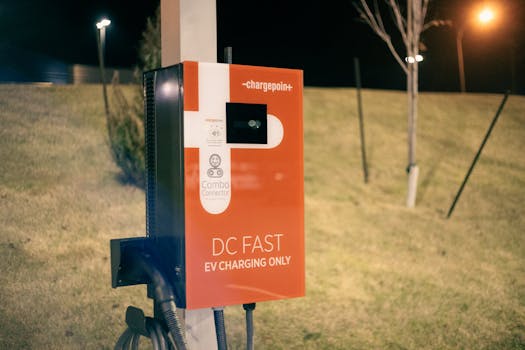
**
Ocean Power Technologies (OPT) Revolutionizes Ocean Energy with Patent-Approved Autonomous Marine Vehicle Charging System
The ocean's vast energy potential is finally being harnessed in innovative ways, and Ocean Power Technologies (OPT) is leading the charge. The company recently announced it has been granted a U.S. patent for its groundbreaking autonomous marine vehicle charging system. This development represents a significant leap forward in the field of ocean energy and autonomous marine systems, promising a more sustainable and efficient future for ocean exploration and renewable energy generation. This innovative technology tackles crucial challenges limiting the widespread adoption of autonomous underwater vehicles (AUVs) and wave energy converters (WECs).
Unlocking the Power of the Ocean: A Game-Changer for Autonomous Marine Vehicles
The patent covers a system designed to efficiently and autonomously charge a wide variety of marine vehicles, including AUVs, remotely operated vehicles (ROVs), and even wave energy converters. This is a critical breakthrough because battery life has historically been a major limiting factor in the operational capabilities of these crucial tools. Prolonged underwater operations require significant energy reserves, and the need for frequent manual charging has hindered their widespread use in various applications.
OPT's patented system addresses this challenge by incorporating several key features:
- Wireless Power Transfer: The system utilizes advanced wireless power transfer technology, eliminating the need for physical connections and minimizing the risk of damage or entanglement. This is a significant advancement over traditional charging methods, enhancing safety and reliability in harsh marine environments.
- Autonomous Operation: The system is designed for fully autonomous operation, enabling unattended charging cycles. This greatly reduces the operational costs and logistical complexities associated with manual charging procedures. It's a critical step towards truly autonomous oceanographic surveys and monitoring.
- Modular Design: The system boasts a modular design, allowing for customization to accommodate various sizes and power requirements of different marine vehicles. This adaptability significantly broadens the system’s applicability across diverse fields.
- Enhanced Safety Features: The system incorporates robust safety features to protect both the charging system and the marine vehicles during the charging process. This is crucial for operating in the demanding environment of the ocean.
- Scalability and Sustainability: The technology is designed to be scalable, allowing for the simultaneous charging of multiple vehicles. Furthermore, it’s designed with sustainability in mind, contributing to a cleaner and more environmentally friendly approach to ocean exploration and energy harvesting.
The Impact on Various Industries
This technological advancement has far-reaching implications for a variety of industries, including:
- Oceanographic Research: Researchers can now deploy AUVs and ROVs for extended periods, enabling more comprehensive and detailed studies of ocean ecosystems and phenomena. This is vital for understanding climate change impacts, marine biodiversity, and other critical scientific issues. Keyword: Oceanographic research, AUV technology, ROV applications
- Offshore Energy: The system enhances the efficiency and reliability of wave energy converters, contributing to the growth of renewable energy sources. Keyword: Wave energy converters, renewable energy, offshore energy
- Defense and Security: Autonomous marine vehicles equipped with this charging system can perform extended surveillance and security missions, providing crucial capabilities for maritime patrol and defense applications. Keyword: Autonomous underwater vehicles (AUVs), maritime security, defense technology
- Commercial Applications: Industries like underwater construction, pipeline inspection, and seabed mining can benefit from the enhanced operational capabilities of AUVs and ROVs with extended operational endurance. Keyword: Underwater construction, pipeline inspection, seabed mining
Addressing the Challenges of Autonomous Underwater Vehicle Deployment
The limitations of battery technology have been a significant hurdle in maximizing the potential of AUVs and ROVs. Traditional charging methods require manual intervention, which is time-consuming, expensive, and often logistically challenging. OPT's innovation directly addresses these limitations, paving the way for more widespread and efficient utilization of these underwater robots. The long-term benefits include:
- Cost Reduction: Reducing the need for frequent manual charging significantly lowers operational costs.
- Increased Operational Time: Longer operational times lead to increased data collection and task completion.
- Enhanced Data Acquisition: More prolonged deployments result in more comprehensive and valuable data sets.
- Improved Safety: The elimination of manual charging reduces the risk of human error and potential hazards.
The Future of Ocean Energy and Autonomous Systems
OPT’s patented autonomous marine vehicle charging system is a testament to the ongoing innovation in the field of ocean technology. This technology not only improves the capabilities of autonomous marine vehicles but also contributes to the development of cleaner and more sustainable energy solutions. The potential applications are vast, spanning scientific research, commercial activities, and national security.
As research and development continue, we can expect even more advancements in wireless power transfer technology and the integration of AI and machine learning to further optimize the performance and efficiency of these systems. OPT’s success with this patent is a significant step toward unlocking the full potential of the ocean's energy and creating a more sustainable future for all. The impact on various industries, from oceanographic research to renewable energy, is poised to be transformative. The world is looking forward to seeing how this game-changing technology will reshape the future of ocean exploration and energy. Keyword: Ocean technology, wireless power transfer, AI in oceanography



















